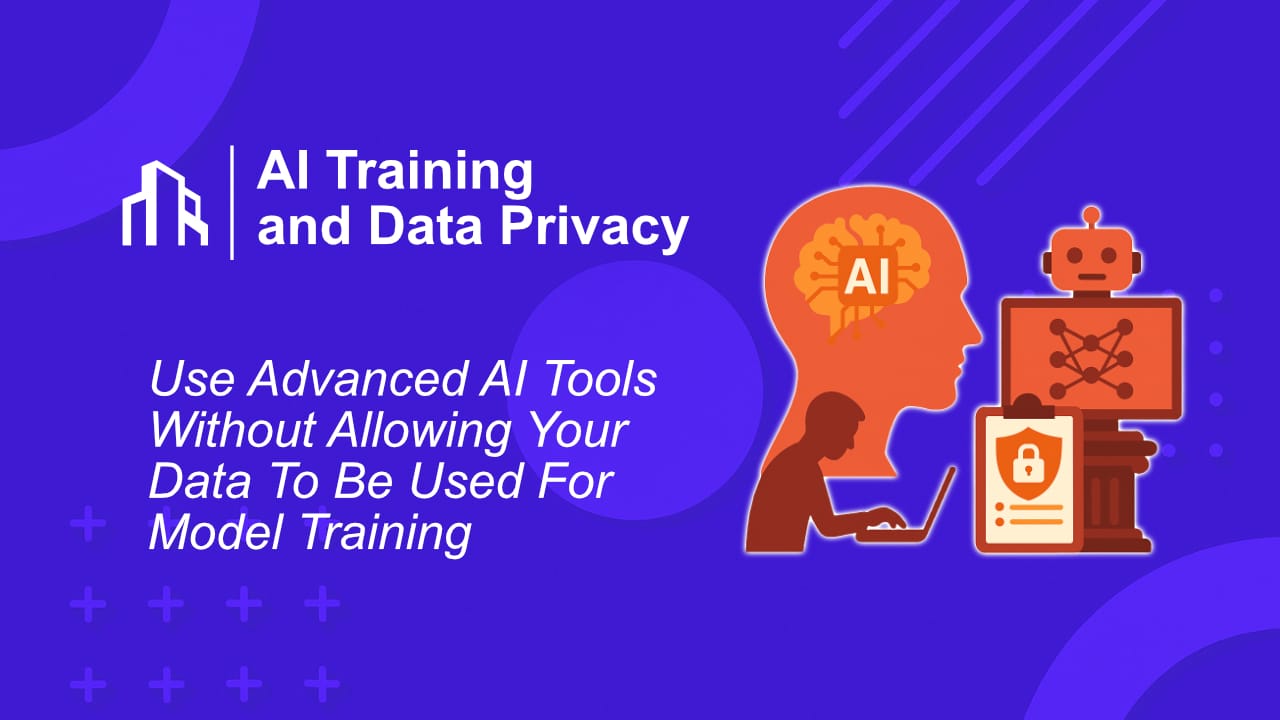AI Training and Data Privacy: How Your Data Is Really Used, Stored and Learned From
A practical guide to how AI training works, what data is used, and how to use AI tools safely without allowing your information to be used for model training.

AI adoption is moving fast, but so is the confusion around what happens to company data once it enters a chatbot, workflow, or automation tool. The key question every organisation eventually asks is the same:
Will our data be used to train the model, or is it only processed to generate answers?
This is not a technical detail. It determines whether your information stays private or becomes part of a model that anyone can benefit from in the future.
This article explains how AI training really works, which data is involved, and how companies can use AI without giving up ownership, privacy, or compliance.
What AI training actually is
AI training is the phase where a model learns from large amounts of data so it can recognise patterns, answer questions, write content, analyse text, and perform tasks.
There are only two ways your data can be handled:
- Used for model training
Your data becomes part of the model's internal knowledge. Once learned, it cannot be removed. - Processed without training
Your data is used to generate answers but does not modify or improve the model.
Most organisations want the second option: full AI capabilities, zero data reuse.
Where training data normally comes from
The majority of training happens long before a business starts using an AI tool. Model providers pretrain on:
- Publicly available text
- Licensed datasets
- Code repositories
- Books and publications
- Human-created examples
None of this involves your internal data unless you explicitly give permission or use a product that requires it.
Your content only becomes part of training if you:
- Use a free or consumer chatbot
- Agree to data-sharing in the terms
- Use a personal account instead of a business workspace
- Submit data for fine-tuning
Why this matters for businesses
Once your data is used for training, you lose control over it. That introduces real risks:
- Internal knowledge becomes part of a public model
- Customer data may leave your legal boundary
- GDPR and privacy compliance become unclear
- Confidential strategy, code, or documents can reappear indirectly
- Employees can leak information without realising it
That is why serious companies require a no-training guarantee.
AI platforms that do not train on your business data
Several major providers offer business or API plans where your prompts, documents, and conversations are not used for model training.
Here is the short, practical overview:
- OpenAI API
Business usage through the API does not feed into model training. - ChatGPT Enterprise
Company data is excluded from model training with admin-controlled retention. - Microsoft Copilot for Microsoft 365
Data stays inside the Microsoft tenant and is never used to train foundation models. - Google Gemini for Workspace
Workspace content is not used for model training unless a company explicitly opts in. - Claude (Enterprise or API)
Enterprise and API data is excluded from model training. - Perplexity Sonar API
No data retention and no training, specifically for the API version.
Consumer or free versions of these products often behave differently. Business plans are the only reliable boundary.
When you do not need model training at all
Most companies assume they need a “custom trained model”, while in reality their use case only requires:
- Access to internal documents
- A consistent writing style
- Secure knowledge search
- Automated summaries or replies
- Structured answers based on existing data
All of this can be done without training the model.
The solution is retrieval, where the AI queries a private knowledge base instead of learning from it. Your data stays external, replaceable, and fully under your control.
How to use AI without training your data
A practical approach that works in any organisation:
- Use business or enterprise versions, never personal accounts
- Disable data retention where possible
- Store documents in a private index, not inside the model
- Use retrieval instead of fine-tuning when possible
- Apply SSO and role-based access for internal controls
- Block public chatbots for company data through policy
If a tool cannot clearly explain what happens to your data, do not use it.
What Scalevise does in these situations
Scalevise helps companies deploy AI in a way that protects data ownership and privacy while still unlocking automation and productivity benefits. We design:
- AI setups that never train on company data
- Secure retrieval-based knowledge systems
- Enterprise-grade AI workflows with audit trails
- Compliant automation across tools and platforms
The result: full control, zero data leakage, measurable value.
Need a compliant AI setup?
If you want to use AI without risking that your data becomes part of someone else’s model, we can design the full architecture, governance layer, and workflow.
